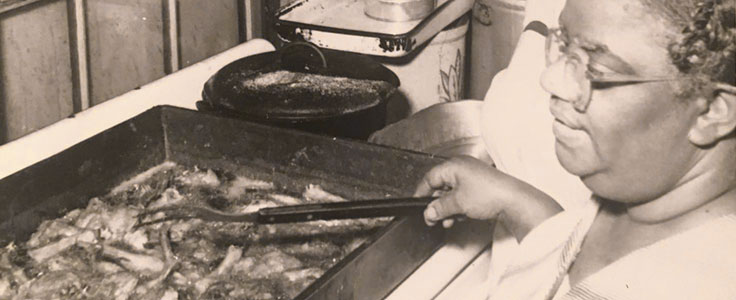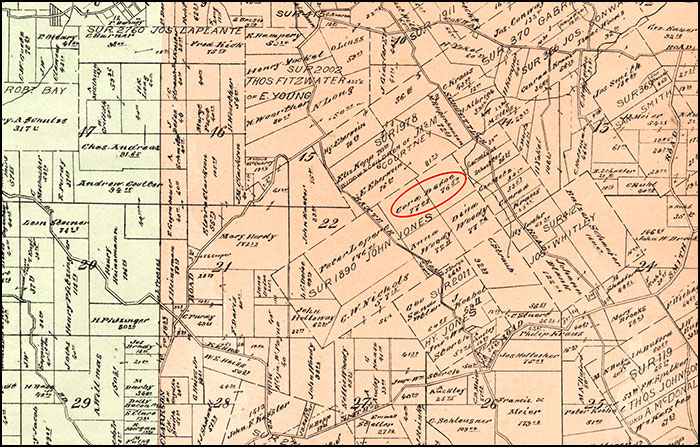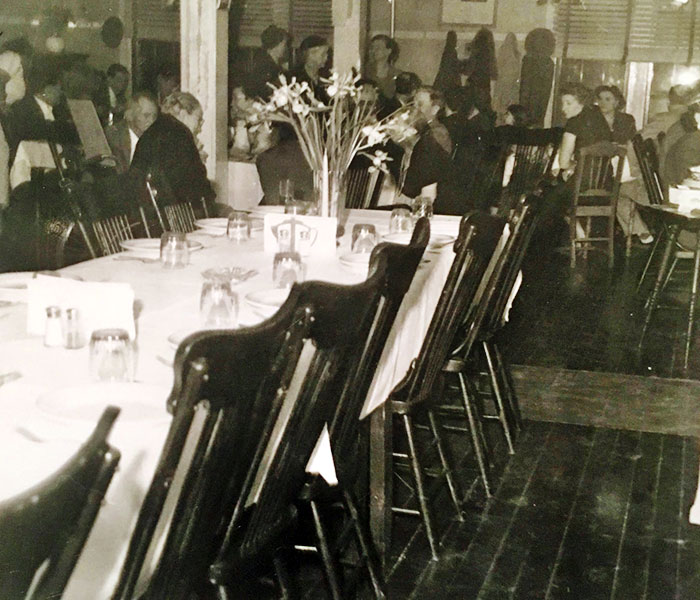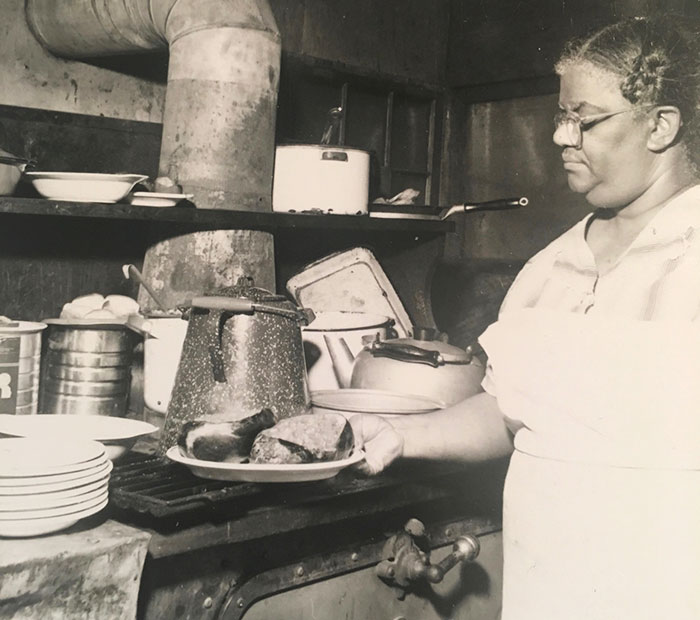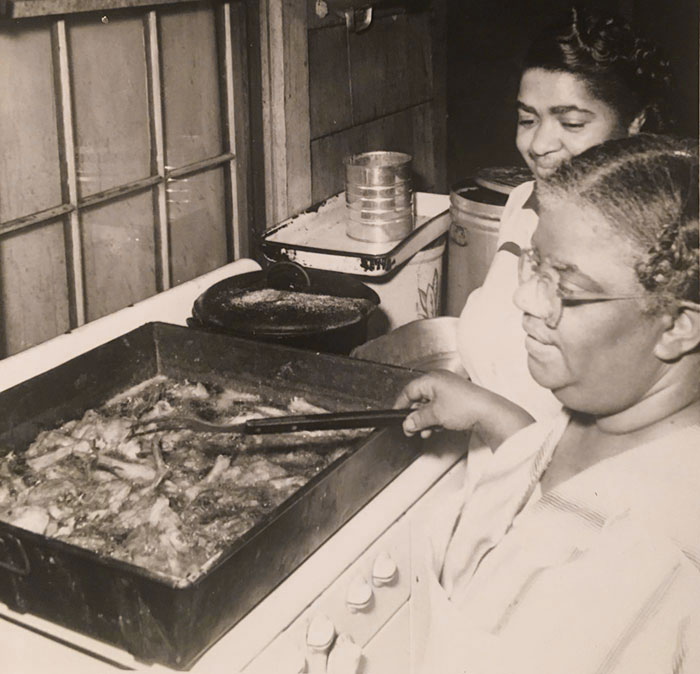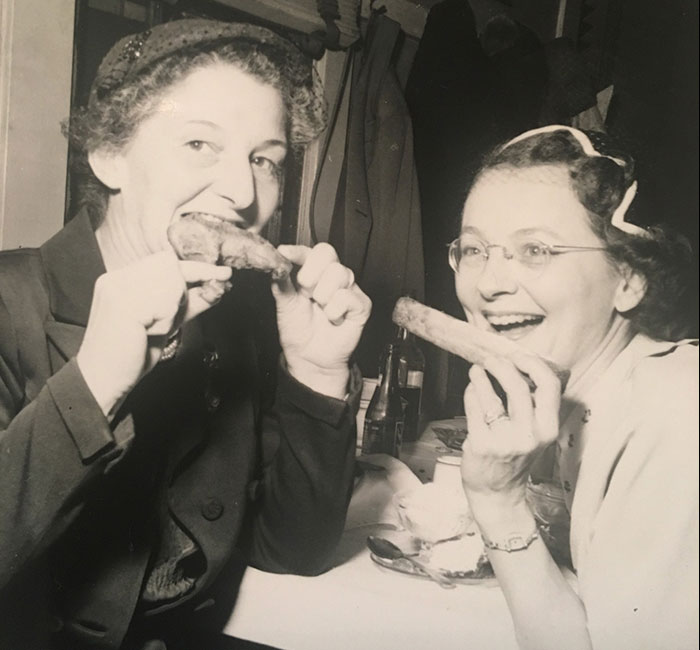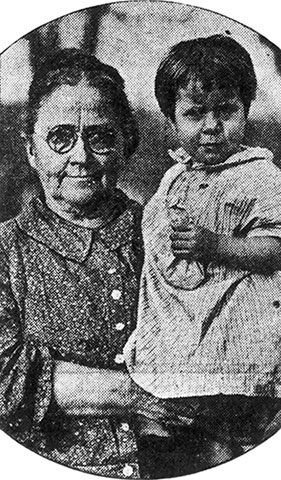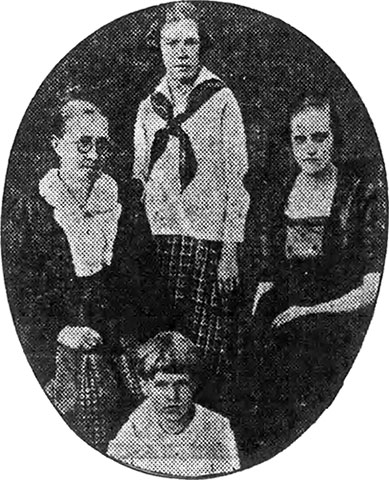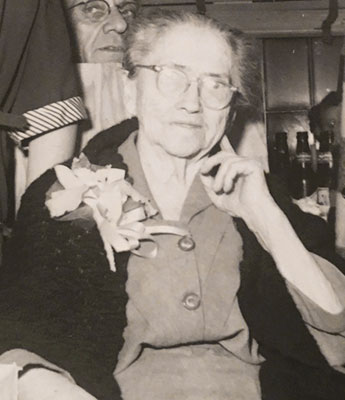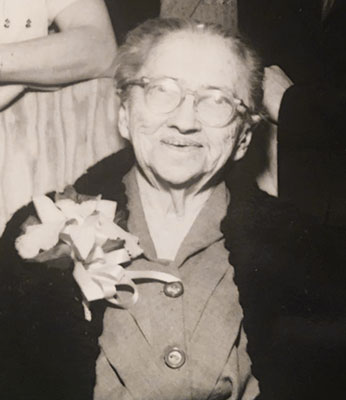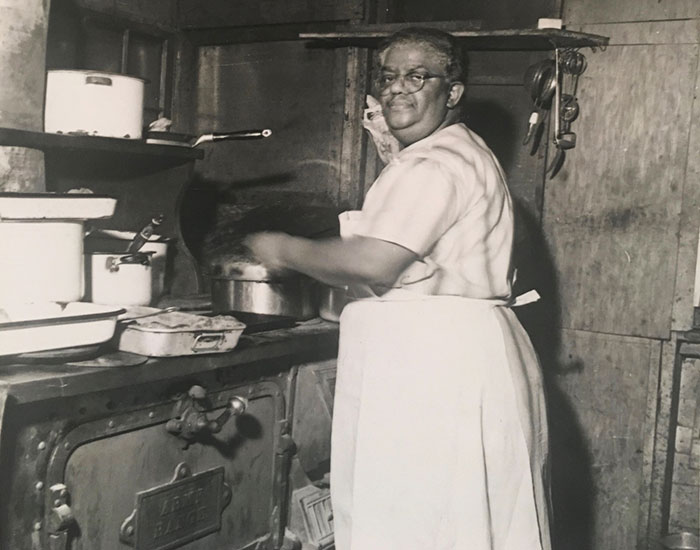|
Madame DeFoe's
Cora Lee Woody was born on February 29, 1860 on her father's farm in St. Louis County. She would live there her whole life. Her father was John D. Woody, who came to Missouri from Virginia. He was married three times and was the father of sixteen children. His farm, consisting of 400 acres on Baxter Road, in what was then Bonhomme Township, was said to be one of the finest in the country. Cora Woody attended school and worked on her father's farm. And then in 1881, at age 21, she married W. Franklin DeFoe. Frank Defoe's father owned a farm near John Woody's 400 acres. Due to his high-sounding name, many assumed he was a Frenchman. In fact, his great-grandfather had been born in Virginia, prior to the American Revolution.
John Woody died in
1889. His farm passed on to his children, with Cora DeFoe receiving
just over 160 acres of the Baxter Road property, one mile north of
Clayton Road then called Smith Road. After her father died, Cora DeFoe and her husband worked to farm the land she had inherited. They did so for close to ten years. And then one day, Frank DeFoe disappeared. "Went away with another woman," stated the former Cora Woody, who would eventually file for divorce in 1903. Unfortunately, she couldn't divorce herself from the $10,000 debt she had been left with.
So Cora DeFoe spent her days preparing fresh vegetables and butter and eggs for a rich clientele in St. Louis, coaxing a horse and buggy for seven hours over 22 miles of rutted dirt roads and always pleasing with her products. * * * * *
In those days it was considered great sport to
get aboard a tally-ho a horse-drawn coach, complete with a high-hatted
driver in the front, a high-hatted trumpeter in the rear and guests who were just high and go coursing over the
countryside. At frequent intervals the trumpeter would hoist his
trumpet and give forth with a series of mad, wild blasts which sent
cows and chickens racing for cover.
Such a party descended upon the DeFoe farm one day in 1899 and announced they wanted fried chicken.
The party departed with a flourish of trumpets to spread the word, and as time passed, other parties began coming to Cora DeFoe's for her fried chicken. And by the time automobiles were running on unpaved country roads, her farm was an established eating place, its name suggested by a friend who had known her former husband.
Thus, Cora DeFoe, the former Cora Woody, became Madame DeFoe. * * * * *
Madame Defoe's was a modest, colonial-style
farmhouse which sat in a grove of trees at the end of a long lane.
One long dining room occupied the whole front half of the house. The floors
were varnished; the tables, which sat from two to a dozen, were
covered with white oil cloth, surrounded by old-fashioned chairs
varnished dark brown.
The Madame, whose living quarters were on the second floor, looked like just what she was a middle western farm woman with gray hair, a lot of wrinkles and a fondness for reaching people's hearts through their stomachs. When Madame DeFoe first started serving food, a trip to her place was little short of an expedition.
The festivities often began with the Madame enjoying a bottle of beer with her guests. She would then instruct her head waitress to clear away the bottles and serve dinner. Dinner was orchestrated by Edna Darby, Madame DeFoe's longtime cook. She was taken in by the Madame in 1908 as a young teenager.
The meal was served family style, starting with a cool, crisp green salad
and a dish of home-made cottage cheese. These were followed by a
bowl of mashed potatoes which were white and fluffy, and a platter
of pigs-in-blankets tender young cabbage leaves wrapped around an
aromatic mixture of rice and meat.
Then came a platter of candied sweet potatoes small ones swimming in a clear amber syrup and a casserole with a beautifully browned bread-crumb crust covering hot stewed tomatoes. There were also cornbread sticks dripping with sorghum and a plate of piping-hot rolls. Finally, a platter heaped with hot fried chicken arrived, a little browner than golden brown, with its surface crisply fried but not too crisp.
Pie or ice cream was available for dessert.
The legend of Madame DeFoe was about more than raising chickens and vegetables. She also raised a family of thirty-six children, not one of them her natural offspring. They came in as drifters, were salvaged from the juvenile court and taken from foundling homes. Only two were legally adopted by the woman who reared them.
Every child of eligible age that "just drifted in" was given a home and he was also put to work. He was taught habits of industry, honesty and thrift. He was given an education. He did his small share to keep the home going.
Edna Darby and her husband Sam both came to the
Madame as young teenagers. They were subsequently married and
continued to live on the farm with their three daughters. Along with Edna
becoming the Madame's longtime cook, her daughters became
waitresses.
Madame DeFoe had but a few rules which she required her large brood to follow. She was not a strict disciplinarian except in a few things.
* * * * *
By 1950, three generations of St. Louisans had
enjoyed the delicious fried chicken dinners and hospitality served
up at the Baxter Road restaurant of Madame DeFoe. At 91 she still
actively supervised the serving and greeted her guests personally.
If time permitted, she delighted in sitting down and talking to
them.
Cora DeFoe died on April 5, 1955 at the age of
95. The chief beneficiary of her estate was Edna Darby, who had
faithfully served the Madame for 45 years. She said she was surprised
at the size of the bequest, but that Madame DeFoe had promised to
take care of her after death.
On April 7, 1955, the following editorial appeared in the St. Louis Post-Dispatch.
Copyright © 2020 LostTables.com |
||||||||||||||||||||

